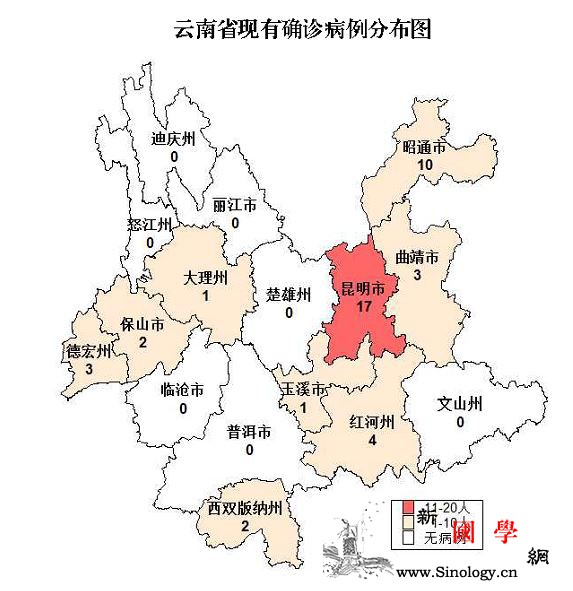原题:我言秋日胜春朝-;-;斯德哥尔摩中国文化中心立秋特辑
核心词:立秋,齐白石,蟋蟀,设色,藏于,美术馆,云龙,水墨,贵州,材质,规格
立秋是一年中的第十三个节气,今年是阴历六月十八日,对应公历8月7日,标志着秋季伊始,暑去凉来,禾谷成熟。古人容易悲秋,一到秋风起,心中就升起落寞惆怅之感。春天鸟语花香、夏季草木争荣的繁华一去不复返。在他们心目中,秋季开始万物凋零,随后就是严冬的肃杀。但是唐朝诗人刘禹锡却独树一帜,吟诵出千古绝唱:
自古逢秋悲寂寥,
我言秋日胜春朝。
晴空一鹤排云上,
便引诗情到碧霄。
-;-;《秋词二首》

贵州 威宁草海 黑颈鹤故乡 Home of Black-necked Crane, Weining county, Guizhou province
Liqiu (Beginning of Autumn), the thirteenth of 24 solar terms, falls on the 18th of the sixth month of Chinese lunar calendar, which is August 7 this year. Liqiu signifies the end of summer and ripening of crops. Chinese ancients are inclined to be sorrowful in autumn - a sense of desolation and melancholy emerges as the autumn wind arrives, carrying away the chirping birds, fragrant spring flowers and lush summer trees. In their hearts, when autumn begins, everything starts to wither, and severe winter follows. But for Liu Yuxi, a celebrated poet in the Tang dynasty, it evokes a completely different sentiment. He says:
Since olden days we feel in autumn sad and drear,
But I say spring cannot compete with autumn clear.
On a fine day a crane cleaves the clouds and soars high;
It leads the poet’s lofty mind to azure sky.
- Song of Autumn / Translated by Xu Yuanchong

吉林 向海仙鹤 Cranes in Xianghai National Nature Reserve, Jilin province / 颜国良 Yan Guoliang
在二十四节气的时令划分中,“五天为一候,三候为一气”。立秋“一候凉风至;二候白露生;三候寒蝉鸣。”其实,立秋之始,暑热仍盛,尤其今年立秋较早,还未出伏,之后通常还会出现“秋老虎”(立秋后短期回热至35℃以上的天气)。况且秋天瓜甜果熟,成熟的金黄和酡红,给世界增添了比春夏更缤纷的色彩,让人们可以感受大自然给予的更丰富的馈赠。

广西壮族自治区 东兰月亮河长寿村 Moon River Longevity Village, Donglan county, Guangxi Zhuang Autonomous Region
Each solar term consists of 3 units ( “hou” in Chinese) with 5 days in each unit. Cool breeze comes in the first five days of Liqiu; white dew appears in the second five days and winter cicadas begin to sing in the third. However, it can still be hot around Liqiu, especially when Liqiu arrives during the three periods of the hot season this year. After the Beginning of Autumn, temperature is also expected to rise to more than 35℃ - a phenomenon literally translated as “autumn tiger”, meaning that the heat is as strong as the tiger. Moreover, the ripe fruits add a touch of color brighter than spring and summer to the world, enabling people to enjoy precious gifts of the nature.

福建龙岩 永定初溪土楼群 Tulou Cluster of Chuxi Village, Yongding county, Fujian province
- 祭祀 / Offering Sacrifices
立秋代表着即将迎来丰收的季节,因此要立社祭祀土地神,感恩上天赐予的好年景。
Liqiu marks a season of harvesting. Therefore, people offer sacrifices to the Earth God to show their gratitude for the good yield.

- 晒秋 / Drying crops
立秋之后,作物渐熟,在地形复杂较少平地的湖南、江西、安徽等南方山区,为防止收获的作物发霉,农户利用自家房屋、窗台、屋顶等结构,架晒或挂晒农作物,逐渐形成了“晒秋”的习俗。
In the mountainous areas in Hunan, Jiangxi, Anhui and other southern Chinese provinces, farmers use their houses, sills, roofs and other structures to keep the harvested crops dry and not mouldy.

贵州 占里 Zhanli village, Guizhou province / 张琪 Zhang Qi

贵州 金秋侗寨 Dong village in Autumn, Guizhou province / 张建钊 Zhang Jianzhao

福建 三明尤溪县桂峰村 Guifeng village, Youxi county, Fujian province
- 啃秋 / 咬秋 Biting Autumn
立秋要吃西瓜或香瓜,寓意炎炎夏日酷热难熬,忽逢立秋,将其咬住,抒发丰收的喜悦。
People should eat watermelon or muskmelon on Liqiu, symbolizing a grasp of autumn after the sweltering summer and expressing the joy of harvest.

- 贴秋膘 / Fleshing out in autumn
在立秋这天称重与立夏对比,如果体重减轻,就要多吃味厚的肉菜,补充夏季的消耗,也为冬天储存能量。
Compare your weight of Liqiu with that of Lixia (Beginning of Summer). If you have lost weight, you should eat more heavy food, especially meat, to make up for the loss of weight in summer and store energy for winter.

浙江 梅干菜焖肉 Pork Stewed with Preserved Vegetables, Zhejiang province

海南 咖喱蟹 Curry crab, Hainan province

北京 烤鸭 Peking Duck / 世界中餐业联合会 World Federation of Chinese Catering Industry
- 养生 / Health Preservation
“立秋到,防温燥”。秋季是万物收获的季节,也是人体阳消阴长的时期,因此养生以收养为原则,可以吃些滋润祛燥的食品,如银耳、百合、蜂蜜、核桃、梨、荸荠等。
"Mind autumn dryness when Liqiu arrives", as the old saying goes. Autumn is the season of harvesting, as well as the time when yang is receding and yin is growing. So according to the principles of traditional Chinese medicine, food that can ease the dryness and nourish the body, such as tremella, dried lily petals, honey, walnut, pear and water chestnut, etc., is highly recommended for this period of time.

绿豆百合粥 Porridge with mung beans and dried lily petals

雪梨银耳羹 Pear and Tremella Soup
- 斗秋虫 / Cricket Fighting
中国有关蟋蟀的记录最早可见于《诗经》。斗蟋蟀的历史可以追溯至唐朝,是上至皇亲国胄,下至平民百姓都乐此不疲的游戏。南宋宰相贾似道曾编写《促织经》,被称为“蟋蟀宰相”。如今,生产优质蟋蟀的山东省宁津县吸引了不少人来此寻找心目中的虫王。
The first records of cricket in China can be found in The Book of Songs, the oldest existing collection of Chinese poetry. Cricket fighting can date back to the Tang dynasty as a game loved by all walks of life, from emperors to ordinary people. Jia Sidao, a grand chancellor in the Southern Song dynasty, complied The Book of Cricket. Today, China's largest cricket-beeding site in Ningjin county, Shandong province attracts people across the nation to search for the cricket king.

视频由新华社CNC提供Video provided by China Xinhua News Network Corporation

月季小虫/ Chinese Rose and Insects
作者 / Artist:居廉 / Ju Lian
创作年代 / Year:不祥 / Unknown
规格 / Dimension:23×28.8cm
材质 / Technique:纸本水墨设色 / Ink and color on paper
现藏于中国美术馆 / In the collection of National Art Museum of China

残叶工虫/ Autumn Leaves and Insects
作者 / Artist:齐白石 / Qi Baishi
创作年代 / Year:1920s
规格 / Dimension:90.3×41.4cm
材质 / Technique:纸本水墨设色 / Ink and color on paper
现藏于中国美术馆 / In the collection of National Art Museum of China

牵牛花工虫/ Morning Glory and Insects
作者 / Artist:齐白石 / Qi Baishi
创作年代 / Year:不详 / Unknown
规格 / Dimension:115×50cm
材质 / Technique:纸本水墨设色 / Ink and color on paper
现藏于中国美术馆 / In the collection of National Art Museum of China

花卉草虫/ Flowers and Insect
作者 / Artist:齐白石 / Qi Baishi
创作年代 / Year:1920
规格 / Dimension:22.5×18.5cm
材质 / Technique:纸本水墨设色 / Ink and color on paper
现藏于中国美术馆 / In the collection of National Art Museum of China

仿汝釉蟋蟀罐 / Cricket Jar with Ru Glaze
明 / Ming dynasty
现藏于故宫博物院 / In the collection of the Palace Museum

青花云龙纹蟋蟀罐 / Blue-and-white Cricket Pot with the Design of Dragon among Clouds
明 / Ming dynasty
现藏于故宫博物院 / In the collection of the Palace Museum

万历款五彩海水云龙纹六棱蟋蟀罐 /Polychrome Cricket Jar with Waves and Dragon-among-Clouds Design
明 / Ming dynasty
现藏于故宫博物院 / In the collection of the Palace Museum
责任编辑:郑思明











